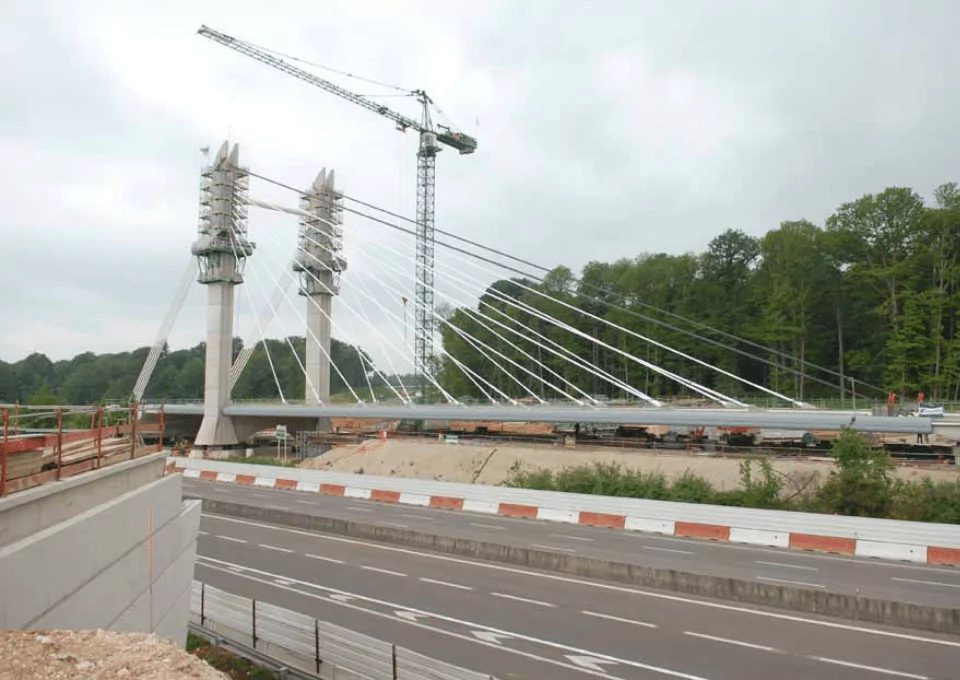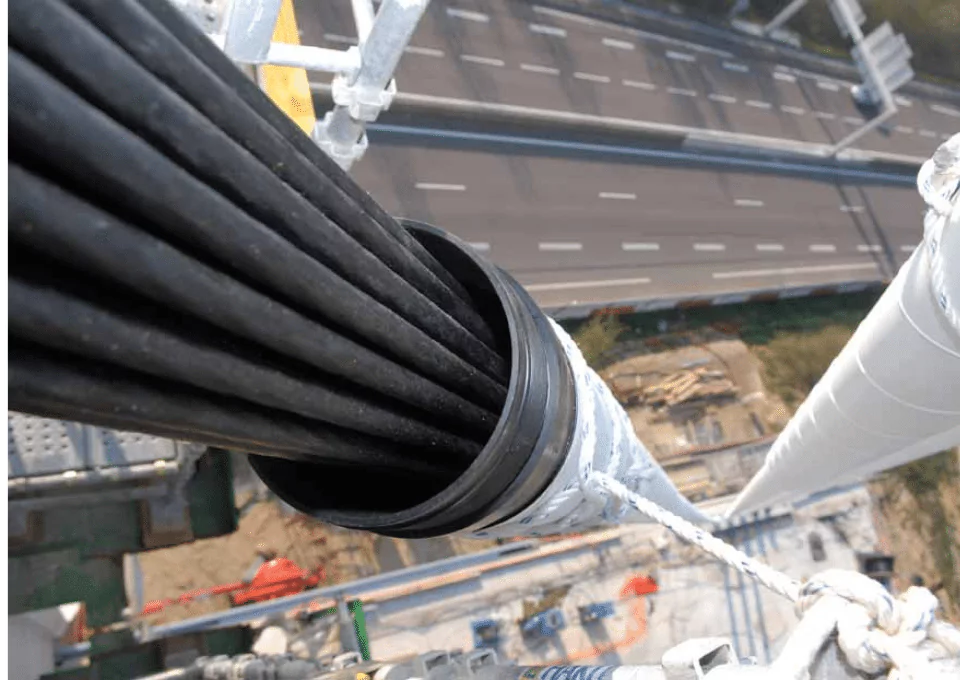
The rotation of a 7,500 t bridge in a few hours
The pivoting manoeuvre of this 7,500 t mammoth defying the laws of gravity to closely follow the abutment built on the opposite bank took place in just six hours. Placed on a pot bearing specially designed by our teams, the south mast was the vertical axis of rotation. A first curved beam, located under the support of the North mast, supported the slide chair, equipped with stainless steel sheets and neoprene pads allowing to limit friction to a minimum. The counterweight abutment rested on a 2nd curved beam.
The sliding was carried out with the help of a 140-t jack. By progressively shifting it on a series of anchor tubes on this second curved beam, it enabled the counterweight abutment to be brought to its final position, by pushing it by 50 cm, thus making the entire structure pivot. A final jacking was carried out to transfer the bridge on the final supports under the Eastern abutment and in line with the Northern mast, prior to the installation of the superstructure and the expansion joints completing the work.
